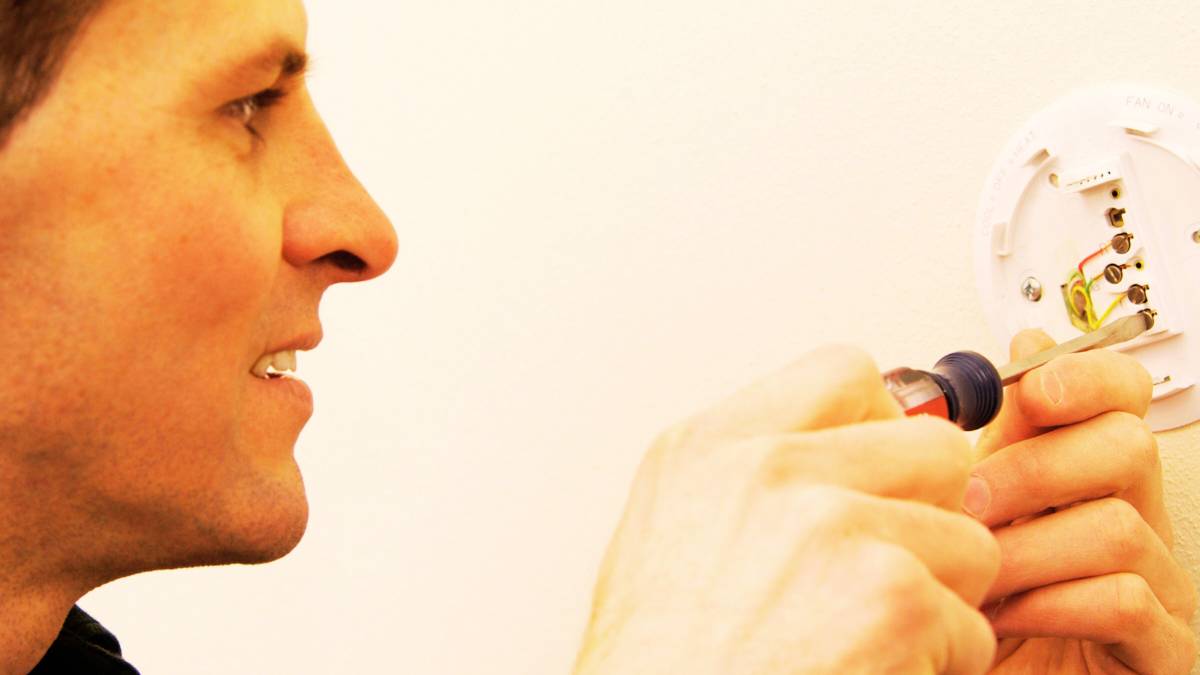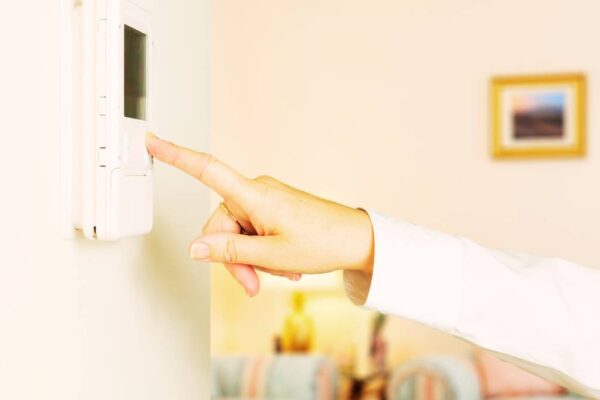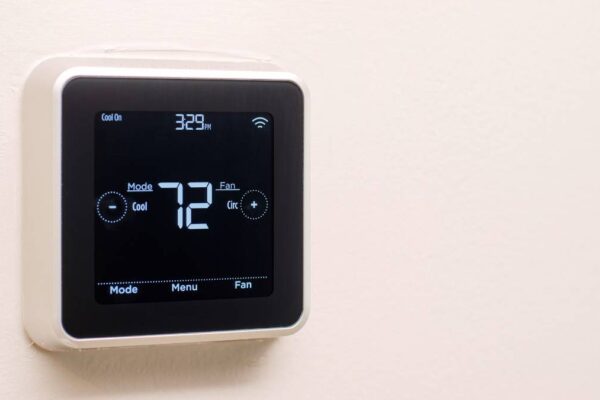Thermostat short cycling is a prevalent problem in HVAC (Heating, Ventilation, and Air Conditioning) systems, characterized by frequent and rapid cycling of the system. This not only impacts the system’s efficiency but can also result in heightened energy consumption and accelerated equipment deterioration. This article will thoroughly examine the reasons, effects, and remedies for thermostat short cycling, offering complete guidance for households and experts alike.
- Thermostat short cycling is when an HVAC system frequently turns on and off in short intervals, leading to inefficiency and increased wear and tear.
- Common causes include incorrect thermostat placement, oversized HVAC systems, dirty air filters, refrigerant issues, thermostat malfunctions, and electrical problems.
- Short cycling can result in higher energy consumption, mechanical stress, inconsistent temperature control, occupant discomfort, and reduced system lifespan.
- Addressing short cycling involves proper thermostat placement, ensuring correct system size, regular maintenance, checking refrigerant levels, calibrating the thermostat, and upgrading to smart thermostats.
What is Thermostat Short Cycling
When an HVAC system begins and stops frequently before finishing a full heating or cooling cycle, it is known as thermostat short cycling. An HVAC cycle should take 15 to 20 minutes on average to ensure that the room achieves the target temperature effectively. On the other hand, brief cycling can occur when the system only operates for a few minutes before turning off and then turning back on soon after. This irregular behavior can cause several concerns, ranging from serious mechanical problems to living space discomfort.
Causes of Thermostat Short Cycling
Several factors can contribute to thermostat short cycling:
- Incorrect Thermostat Placement:
- Placing the thermostat near heat sources (like direct sunlight, ovens, or lamps) or in drafts can cause it to misread the room temperature, leading to frequent cycling.
- Oversized HVAC System:
- An HVAC system that is too large for the space it serves will reach the set temperature too quickly and shut off, only to turn back on shortly after as the temperature fluctuates.
- Dirty Air Filters:
- Clogged air filters restrict airflow, causing the system to overheat and shut down prematurely. This can also lead to short cycling.
- Refrigerant Issues:
- Low refrigerant levels can cause the evaporator coil to freeze, leading to short cycling as the system struggles to maintain the correct temperature.
- Thermostat Malfunctions:
- Faulty or poorly calibrated thermostats can misread temperature settings, causing the HVAC system to cycle more frequently than necessary.
- Electrical Problems:
- Issues like loose wiring or a failing capacitor can disrupt the normal operation of the HVAC system, resulting in short cycling.
Consequences of Thermostat Short Cycling
The impacts of short cycling extend beyond mere inconvenience:
- Increased Energy Consumption:
- Frequent cycling uses more electricity because HVAC systems consume the most power during startup. This can lead to higher utility bills.
- Wear and Tear:
- Constant starting and stopping put additional strain on components like the compressor and fan motors, potentially leading to premature failure and costly repairs.
- Inefficient Temperature Control:
- Short cycling prevents the system from maintaining a consistent temperature, leading to hot and cold spots within the space.
- Reduced Comfort:
- Occupants may experience discomfort due to uneven heating or cooling, as the system fails to adequately regulate the indoor climate.
- Decreased System Lifespan:
- The increased mechanical stress can shorten the overall lifespan of the HVAC system, necessitating earlier replacement.
Diagnosing and Solving Thermostat Short Cycling
Addressing thermostat short cycling involves a systematic approach to diagnose and resolve the underlying issues:
- Check Thermostat Placement:
- Ensure the thermostat is located in a central area away from direct heat sources, drafts, and windows. This helps in getting accurate temperature readings.
- Evaluate System Size:
- Have a professional conduct a load calculation to determine if your HVAC system is appropriately sized for your home. If it’s too large, consider options like adjusting the airflow or installing a variable-speed unit.
- Inspect and Replace Air Filters:
- Regularly check and replace air filters, ideally every 1-3 months, to ensure proper airflow and system efficiency.
- Examine Refrigerant Levels:
- Have an HVAC technician check the refrigerant levels and inspect for leaks. Proper refrigerant levels are crucial for efficient operation.
- Test and Calibrate the Thermostat:
- Ensure the thermostat is functioning correctly and is calibrated to read temperatures accurately. Replacing an old or malfunctioning thermostat with a programmable or smart model can provide better control.
- Investigate Electrical Components:
- Loose wiring or failing components should be addressed by a professional. Regular maintenance can help identify and resolve these issues before they lead to short cycling.
Preventing Future Short Cycling
Prevention is key to avoiding the pitfalls of short cycling:
- Regular Maintenance:
- Schedule annual HVAC maintenance to keep the system in optimal condition. This includes cleaning, checking refrigerant levels, and inspecting electrical components.
- Upgrade to Smart Thermostats:
- Smart thermostats offer advanced features like learning your schedule and preferences, which can help maintain more consistent temperatures and reduce short cycling.
- Proper Installation:
- Ensure the HVAC system is correctly installed by qualified professionals. Proper installation can prevent many issues that lead to short cycling.
- Educate Occupants:
- Inform household members about the importance of maintaining consistent settings and not frequently adjusting the thermostat, which can contribute to short cycling.
Frequently Asked Questions
1. What are the most common signs of thermostat short cycling?
Common signs of thermostat short cycling include:
- The HVAC system frequently turns on and off within short intervals.
- Inconsistent indoor temperatures, with some rooms feeling too hot or too cold.
- Higher-than-normal energy bills due to increased power consumption.
- Unusual noises from the HVAC system as it constantly starts and stops.
2. How can I prevent my HVAC system from short cycling?
To prevent your HVAC system from short cycling:
- Ensure the thermostat is placed in a central location away from heat sources and drafts.
- Replace air filters regularly to maintain proper airflow.
- Have a professional conduct a load calculation to confirm the system is the correct size for your space.
- Schedule annual HVAC maintenance to keep the system in optimal condition.
- Consider upgrading to a programmable or smart thermostat for more precise temperature control.
3. Can short cycling cause long-term damage to my HVAC system?
Yes, short cycling can cause long-term damage to your HVAC system, including:
- Increased wear and tear on components like the compressor and fan motors, leading to more frequent repairs.
- Reduced efficiency, which can increase energy consumption and utility bills.
- A shortened lifespan for the HVAC system due to the additional mechanical stress.
- Inefficient temperature regulation, resulting in discomfort for occupants.
Final Words
Thermostat short cycling is a multifaceted issue that requires careful attention to various aspects of your HVAC system. By understanding its causes and consequences, and taking proactive steps to address and prevent it, you can ensure your HVAC system operates efficiently, providing comfort and saving energy. Regular maintenance, proper installation, and the use of advanced thermostat technology are all effective strategies to mitigate the risks associated with short cycling.



